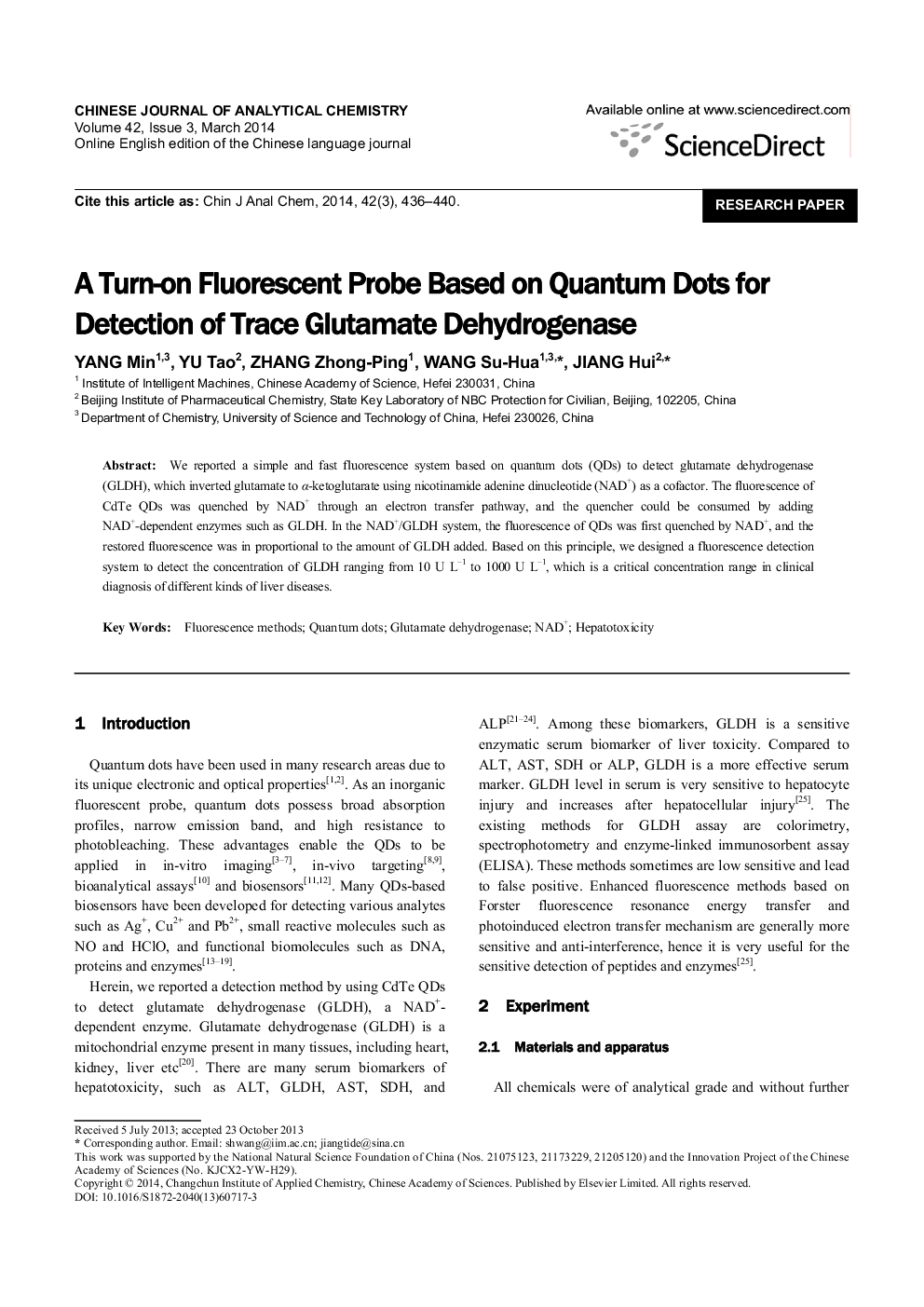| Article ID | Journal | Published Year | Pages | File Type |
|---|---|---|---|---|
| 1182210 | Chinese Journal of Analytical Chemistry | 2014 | 5 Pages |
We reported a simple and fast fluorescence system based on quantum dots (QDs) to detect glutamate dehydrogenase (GLDH), which inverted glutamate to α-ketoglutarate using nicotinamide adenine dinucleotide (NAD+) as a cofactor. The fluorescence of CdTe QDs was quenched by NAD+ through an electron transfer pathway, and the quencher could be consumed by adding NAD+-dependent enzymes such as GLDH. In the NAD+/GLDH system, the fluorescence of QDs was first quenched by NAD+, and the restored fluorescence was in proportional to the amount of GLDH added. Based on this principle, we designed a fluorescence detection system to detect the concentration of GLDH ranging from 10 U L−1 to 1000 U L−1, which is a critical concentration range in clinical diagnosis of different kinds of liver diseases.
Graphical abstractThe fluorescence of CdTe QDs was quenched by nicotinamide adenine dinucleotide (NAD+) through an electron transfer mechanism. When the quencher was consumed by adding NAD+-dependent enzyme, glutamate dehydrogenase (GLDH), the fluorescence was rapidly restored, demonstring the potential of the QDs-NAD+ system for sensitive detection of GLDH.Figure optionsDownload full-size imageDownload as PowerPoint slide
